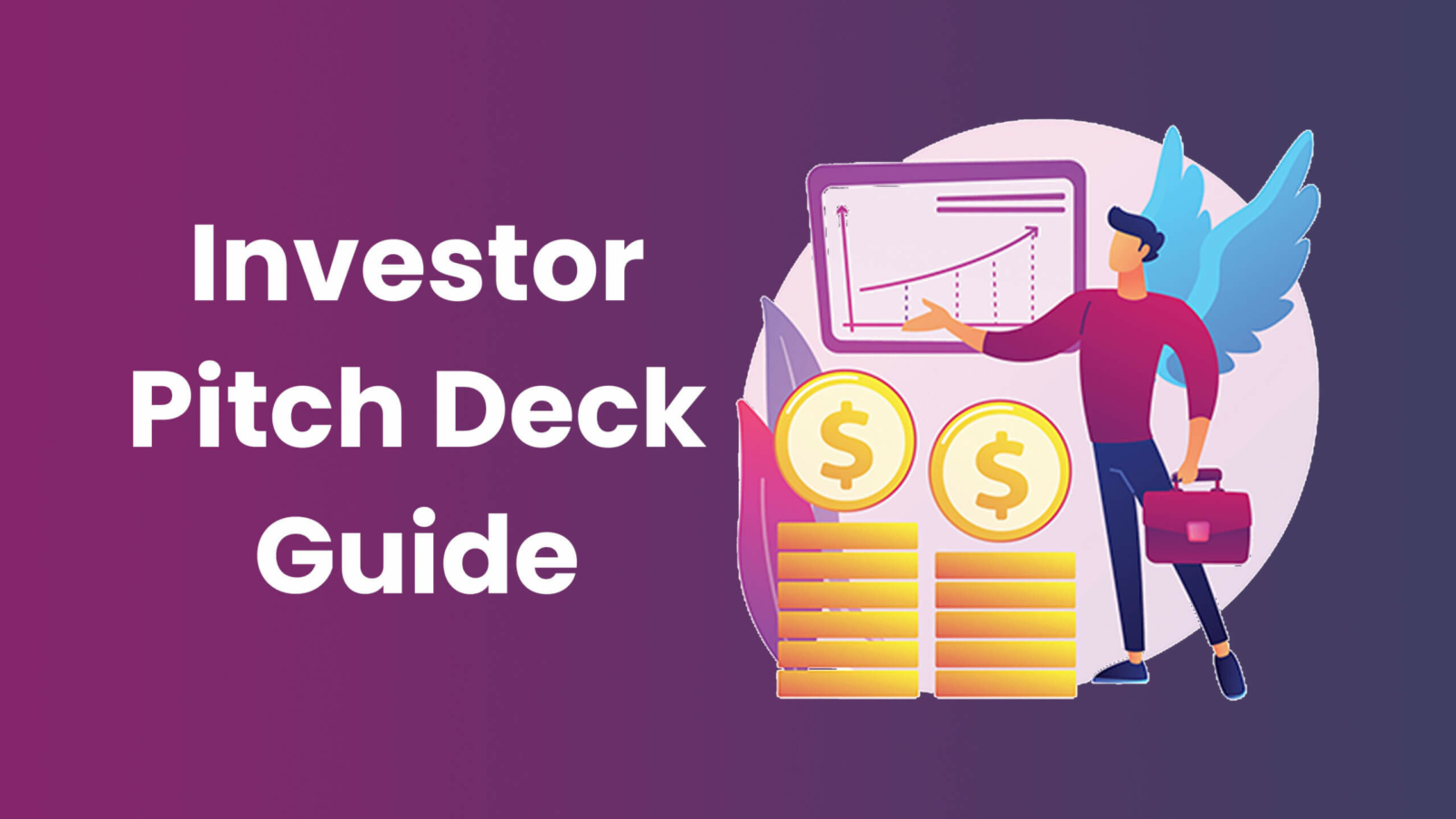Gone are the days when startups would photocopy their business plans to create a handout for potential investors. Nowadays, it’s all about having an impressive and attractive pitch deck to wow them. An excellent investor pitch deck is essential when presenting your business to stakeholders. So let’s dive into pitch decks, the do’s and don’ts, and the best tips in this comprehensive investor pitch deck guide.
What Is a Pitch Deck?
In business, a pitch deck is a presentation that entrepreneurs put together to explain to investors about a business concept, product or service, fundraising needs, and critical metrics like valuation, target market, and financial goals. Pitch decks, also known as startup pitch decks or slide decks, are best when brief but informative accompanied by visually appealing slides that further convey the message.
What Is the Point of a Pitch Deck?
You may assume the only purpose of a pitch deck is raising funds. It is not entirely true, though. Sure, money is the ultimate goal. But you have to get there, one step at a time. Through a pitch deck, you get to:
- Spark interest in your business
- Get a second meeting
- Raise funds
If the investors are interested after hearing your pitch, they want to know more about your business. That earns you a second meeting. Why does a second meeting become important?
You know that pitch decks are brief. Sure, they are Informative but brief. It is a way for investors to gain the first insight into your company or business idea. What they learn in this first meeting is limited. They would need to know more before deciding to make investments. You want to leave investors interested to know more after they hear your pitch. That will earn you a second meeting.

Investor Pitch Deck Guide: How to Create a Killer Pitch Deck
Now that you know the purpose of a pitch deck, it is time to create yours. Before you start working on it, you have to know what format works best to attract potential investors. Through our investor pitch deck guide, you will get to know what to include in your presentation through slides (can include up to 10-11 slides). Take a look:
1. Vision and value proposition
You can include your company’s value proposition on the first slide. Present an overview of your business and the value you offer to your customers. What you plan to say should be clear, short, and simple.
For example, you could make your company’s value proposition compared to another well-known company. You could say something like; “We’re the Netflix for Video Games”
The phrase is clear, short, and simple. Plus, this approach is a clever way to introduce your concept. However, remember that you cannot use a random high-profile company name here. Make sure the comparison makes sense. Your business model has to be similar to the company you are referencing. Otherwise, you are just name-dropping for no reason.
2. The problem
What problem are you planning to solve through your service? The second slide is about that.
Discuss in detail the specific problem you are solving. It would be best to use real-life stories of people facing the issue to explain it. It is the most effective approach to present the problem. Try to make the problem evident and well-described to the fullest extent. That way, your investors will find your business and your goals promising.
You can briefly mention other solutions available in the market as well. It is also better to mention the limitations of those solutions if those solutions are presented. However, do not go into detail yet. It is for another slide.
3. Target market and opportunity
This slide is to discuss your ideal customer. Explain who your customer is and the population. The investors would want to know the total market size and how you position your company in the market? We recommend collecting data on how much people or businesses currently spend on the competitors’ solutions in the market. Such details will help investors to recognize the market size. Take this opportunity to explain the scope and scale of the problem you plan on tackling.
A classic mistake is trying to give the impression that your market is as large as possible. However, that is not what the investors would want to hear. A more reachable and specific market is more appealing to them. If you are vague and unrealistic about your market, it may give off the impression that you are not aware enough of it. If you are more realistic and specific, the more likely investors will be on your side.
4. The solution
Here we are at the most exciting section of the story; the solution. In this part of the presentation, you can describe your product or service in-depth. Include how customers find the service helpful in tackling the problems you mentioned earlier.
If you are a good storyteller, you would know how to present this section to your audience. So far, you have built up the problem, highlighting the negative impacts it creates. Now, introduce your product, highlighting how it will save the day.
Even at this point, give more focus to your customers and the problems those customers face. That seems more convincing and genuine than a whole rant focusing only on the product.

5. Revenue model or business model
By this point, investors got to know about your product in detail. Now it is time to explain how it makes money. Explain how much you plan on charging and who pays the bills.
You can also highlight how your price fits into the larger market by referencing the competition environment. Are you a premium, high-priced product or a low-cost offering that undercuts existing market solutions?
6. Traction and market validation/Timeline of your achievements
Discuss any sales or early adopters you have with your product in this section. Investors want to know if you have proven some aspect of your business model. Why? Well, because they do not want to take unnecessary risks. If you have succeeded, it is a clear sign for them that your product can solve the problem you have identified. Use key performance indicators like monthly active users, ARPU (average revenue per user), and profit margins. These KPIs will show that your approach is promising.
What if you do not have a minimum viable product yet? Then, substitute this slide with a timeline slide to mention your achievements and milestones you have reached. Also, include your future goals and milestones you plan on achieving.
7. Marketing and sales strategy
This slide should highlight your marketing and sales plan. You have to explain what your sales process looks like and how you plan to attract customers? Make sure to show that you know what you are doing. Let the investors know that you have a clear understanding of how to win customers.
Explain the tactics you plan to use to reach your target market and what sales channels you plan to use. Suppose your marketing and sales process is a little off-beat, different in comparison to others. In that case, take some time to explain that too.

8. Introduce your Team
Investors expect to know why are you and your team the right people to build and grow this company? What experience do you have? What sets you and your team apart from others? Convince them by highlighting the best talent of your team, pointing out their expertise. The expertise must be explained to the investors in a manner that they can comprehend. Sometimes these investors can be from a non-technical background, so they might need a high-level overview of the expertise. Also, give examples of their best work (for example; mention the awards they have won and recognition they received in the field)
What if you do not have a fully fleshed-out team yet? In that case, mention the key positions you still need to fill. Do not forget to explain why those specific positions are critical to company growth.
9. Financials
This slide allows investors to see your financials. It should include sales forecast, your income statement, and cash flow forecast for at least three years. Make sure to present these details in a presentation-friendly format. They would not want in-depth spreadsheets that would be difficult to read and would not work for presentations. Instead, take advantage of visual effects. Use charts that show sales, total customers, total expenses, and profits.
You would have to explain how you reached the conclusions regarding your sales goals. Also, make sure to let them know about your vital expense drivers.
Remember to try and be realistic. If you can explain your growth based on traction, you already have or compared to a similar company in a related industry, that is extremely useful.
10. Your competitors
Your potential customers are using alternative solutions to solve the problem of interest.
Use this slide to explain how you fit into the competitive landscape. Highlight how you’re different from the competitors, including how your solutions are superior to theirs. You can explain how you are different from them. Emphasize that X factor that you have that your competitors don’t. Give solid points with examples and explain why customers will choose you over your competitors.
11. Investment and use of funds
We are finally on the topic of money. The last slide is all about the ultimate goal of your pitch deck-raising funds. Your potential investors would want to know how much money you expect.
You also need to explain why that specific amount. Also, investors will want to know how you will use their money. Explain how you plan to spend the money to achieve specific goals you are setting out for your startup.
You can also bring up investors you have invested in you. (if you have any) Explain why they thought it was a good idea to invest in your business.
Investor Pitch Deck Guide – Do’s and Don’ts
The investor pitch deck guide is not complete without letting you know the do’s and don’ts when pitching decks. The following investor pitch guidelines will tell you what to do and what not to do. Do you want to know how to get investors on your side? Also, how to avoid the classic mistakes that could cause investors to reject you? If you want to know, keep reading.
Investor pitch deck do’s
1. Master Storytelling
The best pitch deck must be simple, easy to understand, compelling, and attention-grabbing. And the best way to achieve that is through storytelling. No one can resist a good storytime, not even investors. A relatable story will get their attention than a long, boring self-introduction. Skip introductions and start your presentation with a relatable story that defines your concept and conveys your message.
2. Use numbers, not words
Numbers tell a lot about the company’s financial health and future prospects. It’s said that traction speaks more than words do. Having traction is proof that the company has done well and can grow even more in the future. It also demonstrates how precise you are when it comes to implementing your plan. It is a good indication of whether the firm is really aiming for the stars or just leading the investors up a gum tree.
3. A head-turning opening line
The first few seconds of your pitch deck can make a huge difference. It is the time when you have maximum attention from everyone. And remember that these investors get to hear a lot of pitch decks. Yours is just one of the hundreds. So you want to make your pitch deck stand out. Get them to find yours unique from the very first line. You do not have to waste the first few seconds with greetings and thank yous. Go for an exciting quote instead. Or you can start with a stat or a great review from one of your customers. Either way, it should have the power to get attention from your audience and keep them interested to know more.
4. One topic per slide
One topic per one slide is the way to be clear and precise. You do not want to stack all the information into a couple of slides and expect the investors to understand. That would make them feel like they are back in a college lecture again, which is not what you want.
Also, it makes things easier for you, the presenter. For example, suppose you explain different issues the store owners face and their customers in your pitch deck. The ideal way to present this information is by having the problems split into two slides. Give one for the customer and one for the store owner.
5. Slide design consistency
Consistency throughout your presentation is essential for a few reasons you cannot undermine, including:
- It gives a professional look to the presentation.
- Your audience can focus on what you have to say.
- It gives the impression that you are detail-oriented.
Remember that even if you are doing the talking, your slides speak louder. If the designs you used on the slides are inconsistent and all over the place, it will not convey your message correctly. To avoid that, stick to a specific design and color theme throughout the presentation. Apply a consistent color scheme to all your slides. We recommend going with your brand colors.
Pitch Deck Don’ts
1. Do not bore them with plain slides
You can do so much better than plain white slides and bullet points. You want to give the impression that you are innovative and up-to-date with new tools. And the basic-looking slides with bullet points lined up with no visual effects will not help you there. Use the visual medium to compliment and elevate your story. It should not bring you down.
2. No TMI (Too much information)
We are sure that you are passionate about your business and love to go on and on about it. However, a pitch deck is not the time for that. You may not find it wrong, but it might sound like verbal diarrhea to impatient investors.
They only want to hear about the most critical aspects of your business, so no TMI. Therefore, cut down anything that is not relevant to investors.

3. Not enough visuals
What if your slides have more text and little to no visuals? Trust us-that is not a good look. It can be boring and distracting for the investors to bear with it. And you will ultimately lose their attention. They might fall asleep halfway through it. That is why you need to add some animations or transition effects.
You can use images and clips that convey your message. They can absorb information faster when you use visual mediums than text.
Investor pitch deck guide – Summary
There you have it. Our investor pitch deck guide covered everything from explaining what a pitch deck is to everything you need to know to create your own. You now know that a pitch deck is a necessary tool to 1) get a second meeting and 2) raise funding from investors for your startup. Sure, there are no set rules to follow for creating pitch decks. However, there are a few ‘unwritten laws’ that you may have to follow. For example, you have to keep the basic investor pitch deck guidelines in mind: keep the pitch deck short, simple, and clear. Also, following the format we suggested works best to get investors on your side.
Alternatively, you could consult an expert to help you out. Reach out to professional pitch deck consultants and explain your business idea. Then ask them to craft your story and create your deck for you. Suppose you are only unsure of the design aspect of it. In that case, you can either hire a pitch deck designer or use an intuitive pitch deck builder. That way, you know your pitch deck is flawless.

